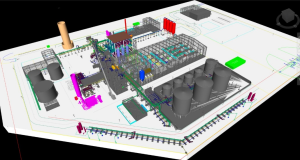Challenges in Biomedical Waste: Why We Need a Circular, Safe, and Scalable Solution
Biomedical waste is one of the fastest-growing and most complex waste streams globally. According to the World Health Organisation (WHO), hospitals generate up to 0.5 kg of hazardous biomedical waste per patient per day, and this figure spikes significantly during pandemics and health crises.
Globally, it is estimated that over 16 billion injections are administered annually, yet only a fraction of syringes and related waste are disposed of safely.
This surge both creates environmental hazards and poses direct risks to public health. The challenge is urgent: without medical waste disposal innovation, biomedical waste will continue to burden healthcare systems, regulators, and the planet.
Outdated Methods, Mounting Risks: The Limits of Incineration and Landfilling
Hospitals and laboratories traditionally rely on two main practices: incineration and landfilling.
- Incineration is the most prevalent method because it reduces waste volume by up to 90%. However, it does this at an environmental cost. Burning biomedical waste releases dioxins, furans, and mercury — substances that are known to cause cancer, disrupt hormones, and damage ecosystems.
- Landfilling itself, though, threatens environmental hazards in the long term. Landfill biomedical waste has leachate that can taint groundwater, disperse toxins and diseases around communities.
- There are efforts for biomedical waste recycling, but they are extremely limited. Risk of contamination, strict regulation, and material separation difficulty guarantee that fewer than 10% of biomedical plastics are ever recycled.
Healthcare executives already know the costs: disposal fees are rising, regulations are tightening, and communities will no longer tolerate incinerator and landfill proposals. This catches hospitals between unsafe practices and prohibitive costs.
Core Challenges in Biomedical Waste Management
With more than four decades of tried solutions, four major hindrances continue to detract from safe and sustainable biomedical waste management.
1. Safety Risks
Biomedical waste includes sharps, blood-contaminated materials, pharmaceuticals, and laboratory reagents. Exposure risk is not limited to healthcare workers, but also extends to handlers of waste, landfill workers, and residents living nearby.
WHO states that unsafe disposal of sharps alone accounts for 16 billion injections a year, with a significant proportion resulting in needle-stick injury and disease transmission.
2. Regulatory & Compliance Barriers
Healthcare administrators face an evolving patchwork of regulations. In the EU, biomedical waste is classified under Directive 2008/98/EC as hazardous, demanding strict treatment protocols.
3. Environmental Damage
Both incineration and landfilling contradict global climate and corporate sustainability goals. Beyond climate impacts, poor biomedical waste disposal problems lead to microplastics, pharmaceutical residues, and toxic ash entering ecosystems.
4. Cost Inefficiencies
Disposing of biomedical waste is one of the highest hidden costs of healthcare operations. Incineration facilities require high energy, special infrastructure, and transport logistics.
Hospitals spend millions annually without capturing any value from the waste stream — a gap that sustainable waste solutions like SynPet aim to close by turning liabilities into resources.
From Crisis to Transformation: The Case for Innovation in Biomedical Waste
Hospitals and laboratories have long regarded waste as a cost of doing business by relying on hazardous end-of-pipe technologies like landfilling and incineration. But now that the industry is moving towards circular economy healthcare, this mentality cannot last.
Waste needs to be reimagined as a resource stream — one that, if dealt with imaginatively through safe biomedical recycling and sustainable waste solutions, can offer environmental, social, and economic dividends.
In this climate, forward-looking healthcare leaders are asking:
- How can we reclaim value from biomedical waste once considered unrecyclable?
- How can we ensure compliance and safety without undermining sustainability commitments?
- How do we future-proof healthcare operations against rising biomedical waste disposal costs and stricter regulations?
These are not rhetorical questions — they point to a systemic gap in biomedical waste management that requires a new generation of solutions.
This is precisely where SynPet’s biomedical waste innovations enter the picture. SynPet enables hospitals, pharma, and policymakers to move from crisis management to long-term transformation.
Why Wait for Regulation When You Can Lead?
Hospitals, pharma companies, and policymakers who act now on biomedical waste innovation will be ahead of rising costs and compliance risks.
SynPet’s safe and scalable technology ensures compliance, sustainability, and resilience today.
SynPet’s Solution – Safe, Scalable, and Circular
SynPet’s Thermochemical Conversion (TC) technology represents a breakthrough in hazardous waste solutions, specifically designed to address biomedical waste challenges.
- Neutralisation of Hazards: Unlike incineration, SynPet’s process does not rely on open burning. Instead, it uses controlled thermochemical reactions that eliminate pathogens and neutralise toxic substances without releasing harmful dioxins.
- Resource Recovery: Biomedical waste is transformed into valuable outputs such as synthetic raw materials and clean energy sources, enabling hospitals and pharmaceutical firms to reintegrate them into the supply chain.
- Scalability: SynPet’s solutions are modular and adaptable, making them suitable for hospitals, diagnostic labs, and large pharmaceutical production facilities alike.
- Compliance and Sustainability: By meeting and often exceeding regulatory standards, SynPet technology provides a future-proof solution that aligns with ESG commitments, carbon reduction goals, and public health protection.
This positions SynPet not only as a biomedical waste management provider but as a strategic partner for healthcare institutions seeking long-term resilience.
Turning Today’s Crisis Into Tomorrow’s Solution
The healthcare sector stands at a pivotal moment. Global biomedical waste volumes are expected to reach over 40 million tons annually by 2030. Regulators are tightening standards, investors are pressuring for ESG alignment, and communities are demanding safer alternatives.
But it is also one of the greatest opportunities to reimagine value creation. SynPet innovations make it possible to move from a linear, hazardous, and costly model toward a safe, circular, and scalable future.
Now is the time for healthcare administrators, policymakers, sustainability leaders, and investors to act. The future of circular economy healthcare depends on it.
Partner With SynPet for a Zero-Waste Future
Biomedical waste doesn’t need to be a liability.
With SynPet innovations, it becomes a driver of public health protection, environmental stewardship, and circular economy healthcare.






